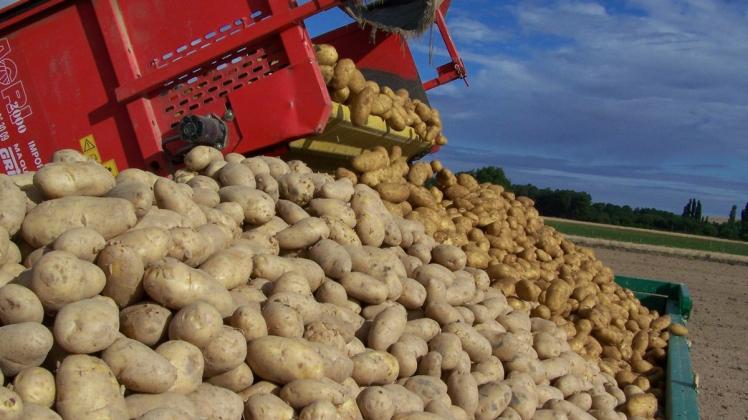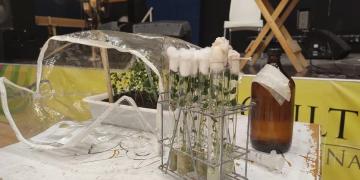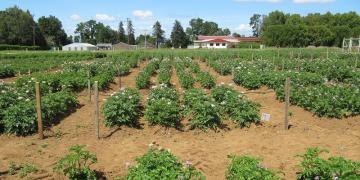Spain (Salamanca): Disastrous campaign with 60% of the potato crop still in the ground
"The quality potatoes are loaded, but the rest are not wanted." The price doesn’t cover costs, and there are difficulties with contracts.

The current situation in the potato sector is described by farmers themselves in Salamanca as "catastrophic." Prices have fallen even further in the last week, and in general, the sour variety, which commands high market prices, has dropped from 20 cents per kilo last week to 16 cents in recent transactions. Many varieties are currently being sold in this province for between 7 and 10 cents, and the price obtained by farmers is, in most cases, below production costs.
Regarding contracts, for the time being, the focus is on ensuring that the potatoes meet the established parameters in order to pay the agreed amount, which had been agreed, although depending on the variety, at around 20 cents per kilo. The problem is that there are verbal agreements that are currently difficult to prove. Warehouse owners usually serve their customers and purchase their produce, but due to the lack of demand, they generally have difficulty selling other products in such a stagnant market.
Julián Palomero, a well-known grocer from Salamanca, sums up the current situation: "quality potatoes are charged at their market price, and those that are not of quality are charged at zero: they are not wanted." Regarding contracts, he maintains that "they are fulfilled," but with the requirement that the potatoes be of the right quality. In this sense, this is a difficult year for quality due to late planting and weather conditions.
Óscar Mateos, a farmer who grows around 200 hectares, is now beginning a crucial week of potato harvesting, like other farmers, who see a month left before the possible arrival of frost. He is clear that the fields with quality potatoes will be harvested first, followed by those in poorer condition, which will be left for the end. The entire campaign is not expected to end until November.
"People thought potatoes would continue to be worth their salt, but they’ve thrown in the towel," notes Óscar Mateos, referring to the number of hectares planted. In Salamanca, 3,700 hectares have been planted (according to the Ministry of Agriculture, Fisheries, and Food’s advance report on crop acreage and production published in May), compared to 3,319 hectares last season and 2,733 hectares in 2023. The price had been favorable in recent years, averaging 32 cents per kilo in Salamanca in 2024, almost 30 cents in 2023, and 34.5 cents in 2022, according to the Castile and León Price Observatory published by the Regional Government.
Potato production is high, with record harvests in China and India, and countries are focused on exporting, with little opportunity due to intense competition, with France leading the way and Egypt and Turkey pushing hard. There is also production in the domestic market from Castile and León, currently mainly with Salamanca and León in the process of harvesting, but also from other provinces, in addition to Galicia. Portugal does buy from Salamanca, but also directly from France.
This low demand is leading to an earlier potato storage period, something that, for example, the Aranpino cooperative, a large producer in Salamanca, will be doing. They plan to soon store and harvest potatoes only in the mornings to take advantage of the low temperatures. Farmer Óscar Mateos, who also works in marketing, is also planning to begin storing. He expects the price to rise somewhat in January or February with the expected decrease in supply. This week, the León market returned to a price of €160/ton for sour potatoes.
Due to this situation, it is also suggested that potatoes are left unharvested in the ground, as the cost of doing so does not compensate the farmer for the uprooting. Currently, the cost of harvesting potatoes by hand is around 4 euro cents per kilo, although most currently harvest by machine, at a cost of approximately 2. The cost of cultivating a hectare of potatoes varies and is estimated at between 6,000 and 10,000 euros per hectare. Added to the low price is the fact that this year’s yields are low, at around 40,000 kilos, but only 40% of the harvest is possible.
Farmers need water to harvest potatoes in the best possible condition, and the difficulty now lies in the end of the irrigation season on September 30th and the inability to access water for crops, although this depends on what the communities have decided and requested. In some, such as Villagonzalo, they will be able to irrigate until the 15th with authorization from the Duero Hydrographic Confederation, and after that, the intention is to request it for several days. This also depends on whether it rains or not. In the case of Villoria, its president, Emilio Barbero, has already warned farmers that water will be available this week and next. "People have been warned," he notes, and assures that no additional days are planned. In this community, with 5,100 hectares, around 60% of the area designated for potatoes remains unharvested. "It’s coming in from outside and is driving down the price," laments Emilio Barbero. "Right now, it’s well below cost," he adds.
Fuente: Traducido por Argenpapa de: lagacetadesalamanca.es




